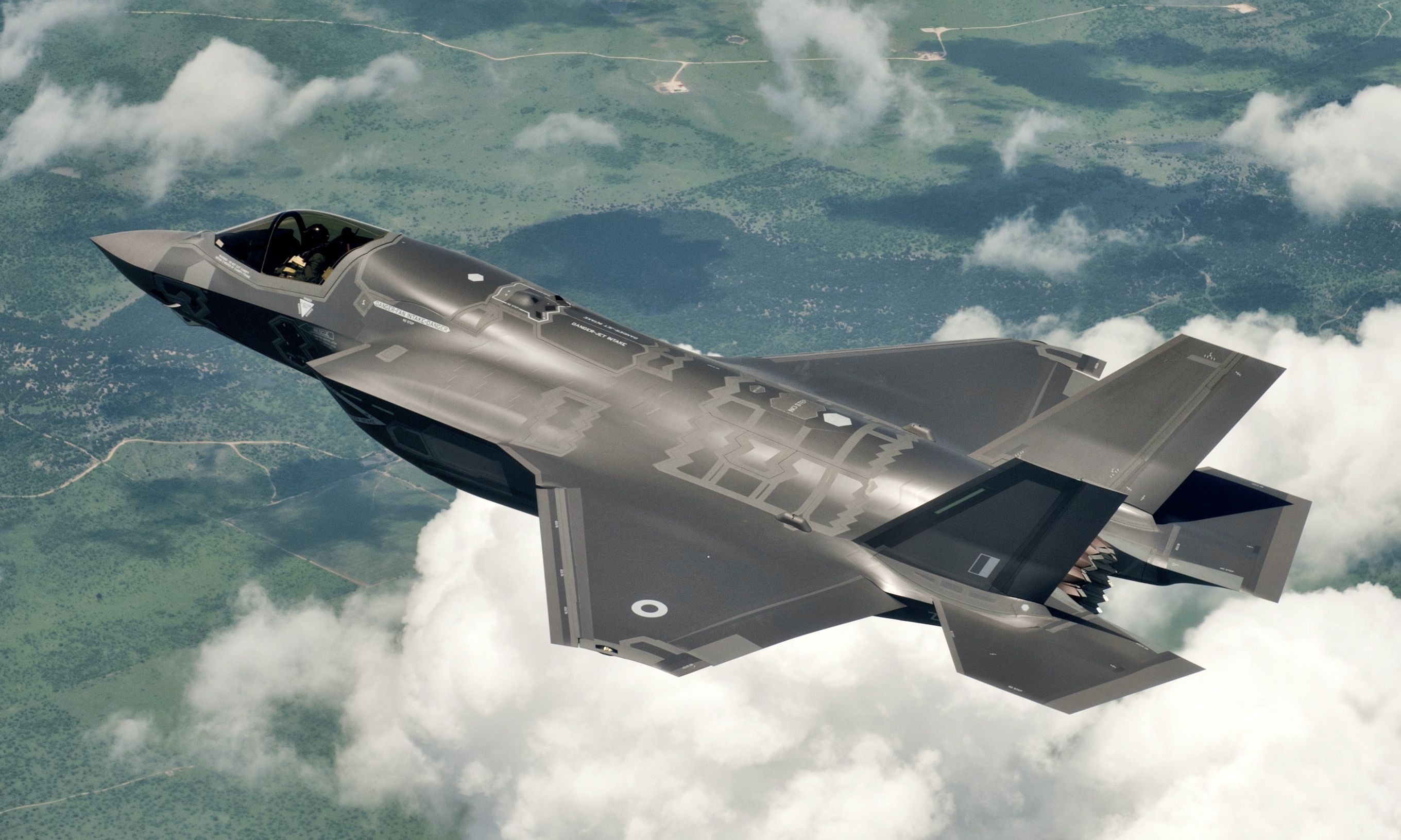2016-05-18 With the RAF and the USAF setting up four squadrons of aircraft between them at two nearby RAF bases, there is a clear opportunity to shape a common sustainment solution.
And the impact of so doing could be significant on the North Sea neighbors, namely, the Danes the Norwegians and the Dutch.
According to an article on the UK Ministry of Defence website, the Ministry of Defence has announced contracts worth 167 million pounds to upgrade and build new facilities at RAF Marham, the future home of the UK F-35B Lightning II squadrons.
The contracts, which will create 300 new jobs, will allow for the addition of maintenance, training and logistics facilities to the station in East Anglia, all of which will be dedicated to the next-generation fighter aircraft.
The announcement was made in the same week as the UK met a new milestones on the F-35 programme with the completion of the 10th aft – or rear – section being built for the UK’s fleet.
Secretary of State for Defence Michael Fallon said:
The F-35 is the most advanced combat aircraft in the world. Whether operating from land or our two new aircraft carriers, they will ensure we have a formidable fighting force.
They are part of our plan for stronger and better defence, backed by a budget that will this week rise for the first time in six years, and keep rising until the end of the decade.
The works at RAF Marham have been made possible through three contracts, placed initially by the Defence Infrastructure Organisation (DIO) and totalling £25 million, for demolition and cabling works at the Norfolk site, readying RAF Marham for new construction works.
A £142 million contract between Defence Equipment and Support (DE&S) and Lockheed Martin UK will then allow the construction of three new buildings which together will keep the new aircraft ready for service, provide training facilities for pilots and ground crew, and enable centralised management of the UK’s whole F-35B fleet.
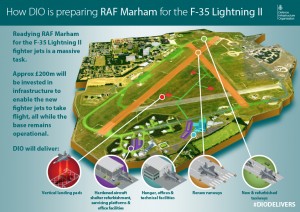
Approximately 300 people will be employed on the construction works, which will be managed by sub-contractors BAE Systems. The buildings will become a place of work for around 250 military and civilian staff when they open in 2018.
DE&S Chief Executive Officer Tony Douglas said:
These facilities are critical to the F-35B Lightning II programme, which is in turn vital to the future capability of the UK’s Armed Forces. The cutting edge technology of these aircraft, supported by world-class facilities at RAF Marham, will ensure we have a battle-winning fleet of jets deployable anywhere in the world.
The aft – or rear – sections of every single F-35 are being built by BAE Systems in Samlesbury, Lancashire. Demonstrating further progress on the UK programme, the company has now completed the first 10 aft sections designated to form the airframes of UK aircraft.
More widely, around 500 companies across the UK are involved in the F-35 Lightning II programme. More than 3,000 F-35s are planned for global delivery over the next two decades.
A story by Richard Tomkins provided further detail to this announcement.
“The construction work at RAF Marham signals the start of an exciting time for the BAE Systems and Lockheed Martin team as the UK prepares for the arrival of the first F-35 Lightning II jets,” said Cliff Robson, senior vice president of F-35 Lightning II at BAE Systems Military Air & Information business. “The contract also underlines BAE Systems’ continued involvement with the F-35 Lightning II program and our company’s credentials in providing infrastructure for the UK’s military aircraft operations.
“We have a proven pedigree in delivering maintenance and support to the Royal Air Force fast jet fleets at bases throughout the UK including RAF Marham, where we have been supporting the operation of the Tornado GR4 fleet for the last decade.”
Not far away, the USAF will base its F-35 squadrons in the UK.
It has been some time since the USAF flew the same aircraft as the RAF, although the RAF and the Marines have flown Harriers for a considerable period of time.
According to a January 8, 2015 press release by the USAF:
The F-35s will be delivered to two fighter squadrons in multiple phases beginning in 2020. Each of the squadrons will have 24 Joint Strike Fighters assigned; totaling 48 aircraft assigned to RAF Lakenheath once full mission capability is achieved.
“Lakenheath is the perfect base for the perfect weapon system in the perfect country,” said Col. Robert Novotny, 48th Fighter Wing commander. “From the beginning, the United States and the United Kingdom have been side-by-side on F-35 program development. This is about continuing to work together with our allies and partners to ensure a secure future for Europe.”
The U.S. is one of nine Joint Strike Fighter partner nations who have agreed to adopt the new platform. This makes European basing crucial to maintaining and improving combat readiness for Air Forces in Europe according to Gorenc.
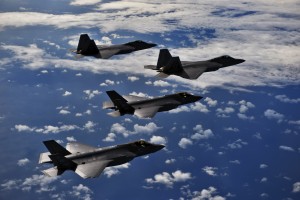
In addition to basing F-35s at RAF Lakenheath, there are also plans to construct shared maintenance facilities for the aircraft in Italy and Turkey. The F-35 partnership is expected to bring the added benefits of increased allied interoperability and cost sharing.
“When pilots from different nations fly the same platform they talk the same language,” Gorenc said. “Interoperability with F-35 partner nations is assured for decades.”
As new threats evolve around the world, NATO continuously seeks new technologies that can deter and defeat those threats.
“Air superiority, freedom from attack and freedom to attack, has always been the primary mission of the U.S. Air Force,” said Gorenc. “With air superiority everything is possible, without it nothing is possible.”
The question remains with regard to how the RAF and the USAF will leverage the close proximity of their aircraft to shape the most efficient and effective logistics support system to support and sustain the F-35 air combat force?
With the substantial similarity between the two aircraft, significant joint support opportunities clearly exist.
The challenge will be to make them happen.
But the Commander of the USAF in Europe is looking forward to the opportunity.
I think that the F-35 is going to do for NATO what the F-16 did, in the sense that many of the partners and many of the allies were flying it, and so we’re going to share common tactics, techniques, procedures (TTPs), concepts of operations, we’re going to leverage the logistics systems, the training system.
I think that’s going go a long way to provide the interoperability that we strive for in the NATO concept.
Oh by the way, the USAF did not provide a lot of logistics support for the Harrier precisely because they did not fly the plane.
But the JOINT strike fighter will allow them the opportunity to support the Navy as well as the Marine Corps as can be seen with the F-35C being maintained at Edwards AFB.
The Perspective of the UK Lightening Force Commander
In a recent interview with Air Commodore Smyth, the head of the UK Ligtening Force provided his perspective on the importance of this joint opportunity.
“The real opportunity for the USAF and the RAF working together with their F-35s will lie in joint training and some semblance of joint sustainment.
The USAF has operated F-15s at RAF Lakenheath and have used a classic USAF model of flying in parts to sustain their F-15s with C-5s, C-17s and tankers.
It would make sense to shift to a new model whereby our F-35s shared sustainment and parts, transparently between our two bases, which after all are not very far apart.” …
A key expectation of the RAF and UK government’s part is that the sustainment approach for the F-35 will build upon their successful Performance Based Logistics model used for both the Tornado and Typhoon.
One evidence of that expectation is that the UK is building a facility for the services and industry to work together, hand in hand, in maintaining and modernizing the aircraft.
Air Commodore Smyth spoke at some length and passion about his experience as the Tornado Force Commander, where a 40+-year-old aircraft was able to be maintained throughout the very high tempo ops facing an aging force.
He argued that simply put: “We could not have had the operational performance of the aircraft without our exceptional contractual and joined-up working relationships with BAE Systems and Rolls Royce.”
The contracts deliver a product – an aircraft able to go to combat, and he would like to see the focus shift from payments to industry based on simple aircraft availability, to ones based on dispatch rate and mission achievement for combat aircraft.
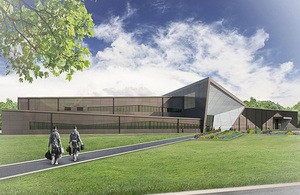
Air Commodore Smyth also discussed the ROCET contract with Rolls Royce as an example of how to do sustainment leveraging using the right kind of industrial-service partnership.
“In the ROCET contract, a few years ago we contracted Rolls Royce to do our FOD management for us.
We were probably trashing upwards of 2 or 3 engines a year through a FOD.
We were doing everything we could from an air force point of view to be good managers of foreign object damage.
We incentivized Rolls Royce to take that on, and as the subject matter experts, they were, and are, fantastic at it.
In fact last year, we had zero engines rejected due to FOD, and that’s down to them applying proper analysis and procedures and recommendations with regards to how to drive down a FOD-engine repair rate.
All of a sudden it’s a win-win for everybody.
As a Force Commander, I get better operational capability out of my airplanes.
I also have engineers that aren’t changing engines, and are able to concentrate on other work.
Rolls Royce makes more money due to the contract incentivization, and I get much better operational performance. Why wouldn’t this be a good thing?
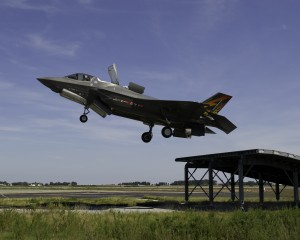
More importantly, we do this effort together, as a Whole Force, so regardless of being Industry or Serviceman, we are all pulling together to deliver operational excellence.”
He clearly wishes to see the F-35 program build on this historical experience and not follow the USAF historic approach to sustainment with their F-15s at Lakenheath.
“With that approach. they are well over 10 years behind us with regard to our sustainment approach and experience.
I would hope that we could leverage this experience, and apply it to the sustainment of our inbound Lightning Force.”
He discussed the shift from a global solution to one, which could be shaped around regional hubs, and thought that the emergence of a viable regional hub support approach would make the most sense.
There are clear barriers to getting there, but for Air Commodore Smyth and others in the RAF, a forward leaning PBL was a necessary ingredient to ensuring the sortie generation rates which the aircraft is capable of doing.
How did he see the strategic opportunity of working with the USAF, as the USAF brings its two squadrons of F-35As to the UK?
“It is early days, but we are discussing ways to shape synergy.

We already have an excellent working relationship with our USAFE colleagues, and both sides are being very open to exploring ideas.
But the real opportunity will lie in joint training and some semblance of joint sustainment.
How do we do training in a more joined up way, both synthetically which is of immediate interest to me, and live with our F-35s because there’s got to be synergy in our approaches in British and European air space.
This could then no doubt grow beyond a UK-USAFE relationship, as our close European neighbors establish their F-35s in their countries.
The next question then is sustainment.
What is the appetite from the USAF to want to leverage off what will already be found at RAF Marham as we shape our infrastructure?
We fully understand that the JPO is still working hard to bottom out what the eventual Global Sustainment Solution will look like.
But at Marham we have left an ability to do modular builds and to grow it bigger if there is an appetite from USAF, or from someone in Europe, to want to bring their airplanes in as well.”
According to the UK MoD:
“Royal Navy and Royal Air Force Pilots are training to fly the new state-of-the-art stealth jet the F-35B Lightning II alongside their US counterparts at Marine Air Corps Station Beaufort, South Carolina.
The highly advanced 5th generation jet will come into UK service from 2018, but will make it’s first appearance over here at the Royal International Air Tattoo at RAF Fairford in July and the Farnborough Air Show too.”
Credit Video: UK Ministry of Defence, April 26, 2016


